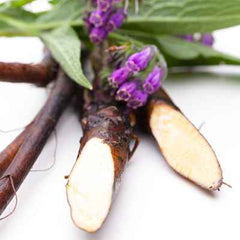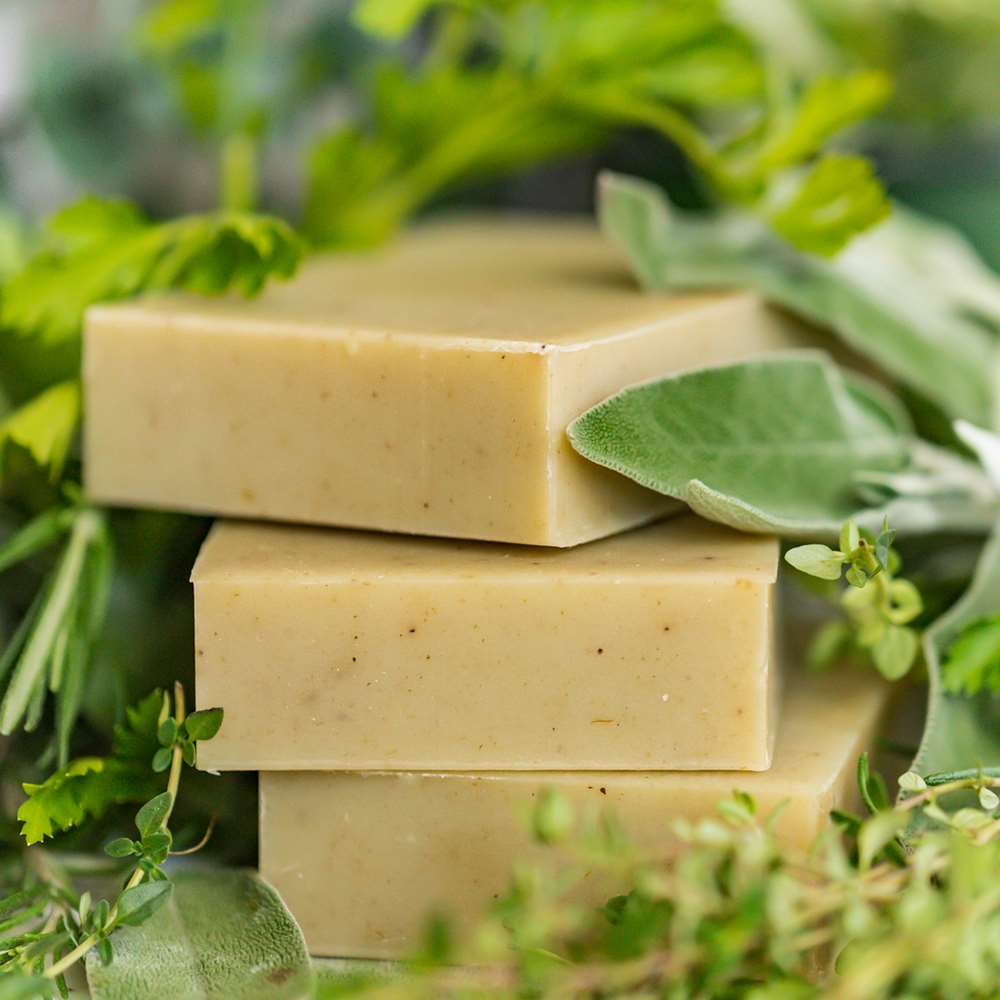Comfrey, Symphytum officinale, is also known by other names like “knitbone” and “bruisewort.” It is a perennial herb with a dark, turnip-like root, thick, hairy stems, and flowers arranged in clusters of purple, blue or white. Native to Europe, it grows in damp, grassy places like river banks and ditches.
Although comfrey is no longer recommended for internal use, it is often used in topical salves, ointments, and other skin care products. Comfrey leaves and roots contain a chemical compound called allantoin which is believed to stimulate cell growth and repair while decreasing inflammation.
The root: The comfrey root contributes more skin-soothing mucilage. Traditionally in Europe, the root, considered nutritive, and cooling was used to help with sprains or strains, or broken bones.
Comfrey has gained popularity as a skin-healing herb and is used to heal rashes, inflammation, and other skin problems. Comfrey has mucilage, which is why it is used in skin and hair products for a softening effect.
Comfrey leaves or roots in a muslin tea bag added to the bath water can be used to soften skin. Comfrey is also great for sensitive skin. It has mild cleansing properties that make it a good product for removing dirt, oils, and impurities without irritating skin.
In hair care, comfrey soothes and stimulates the scalp, and enriches lifeless hair. Comfrey tea, made from root or leaves, poured over hair as a rinse, makes hair soft as silk.

